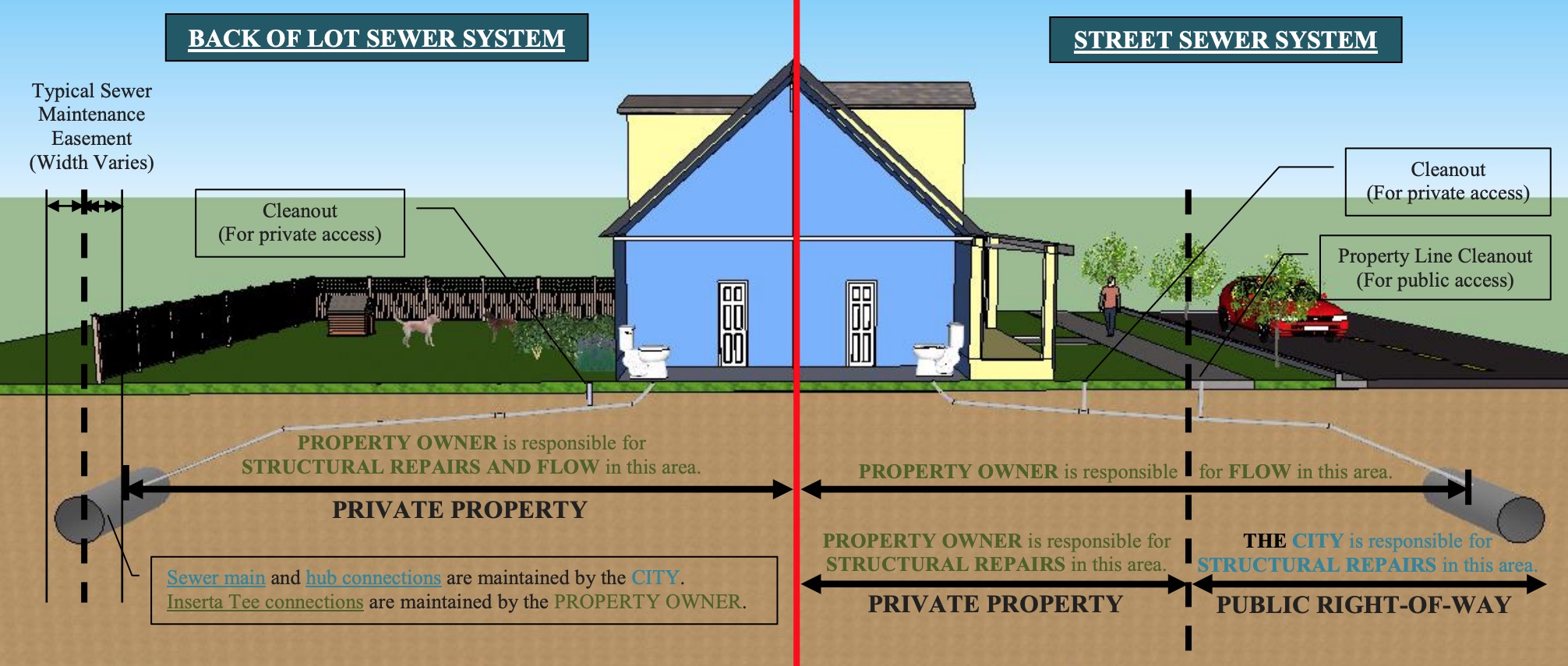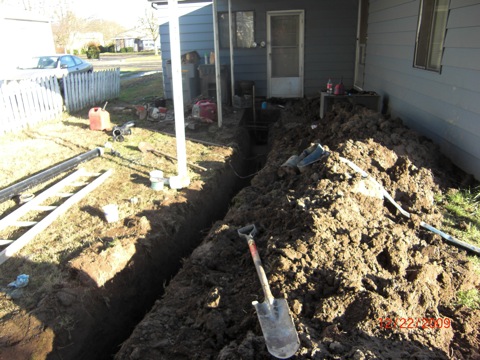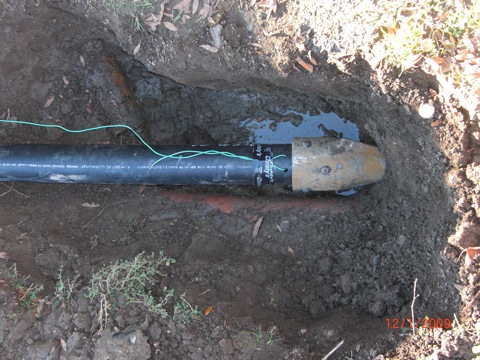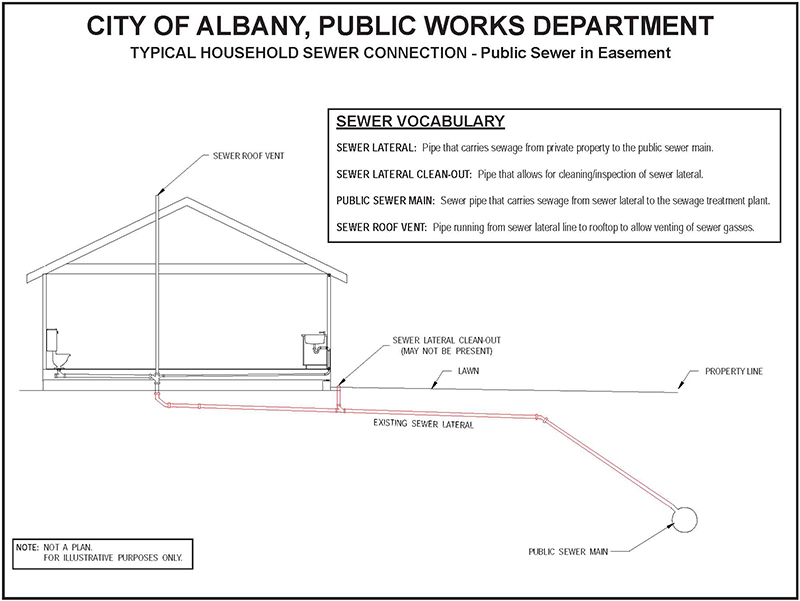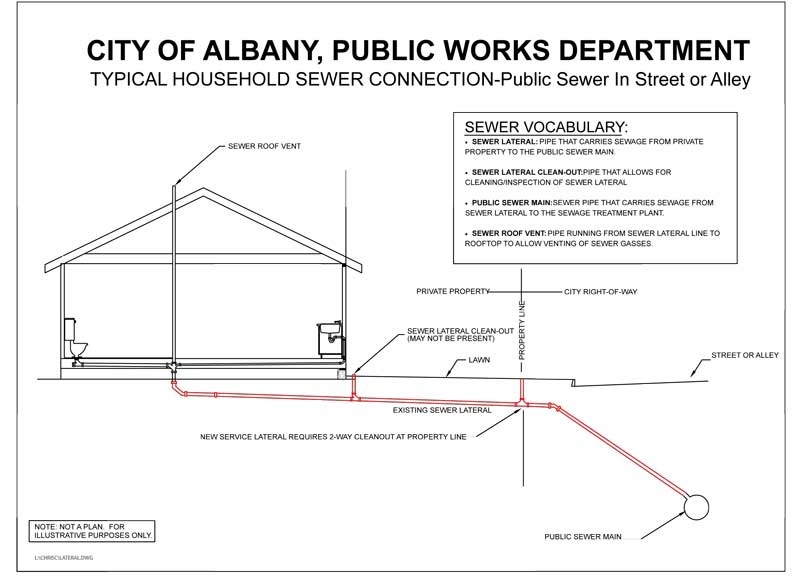Local Improvement Districts (LIDs) may be formed when:
- property owners petition the City for the purpose of constructing and funding public improvements in their neighborhood, or
- at times a Local Improvement District may be formed when the City determines that improvements are necessary.
Special assessments to those properties benefiting from the improvements are implemented by the City through the formation of an LID. Typical improvements made through the LID process are streets, water lines, sewers, sidewalks, and traffic signals.
Why does Albany have Local Improvement Districts?
The LID provides a mechanism to coordinate installation and funding of improvements between one or more property owners. LIDs are initiated either by written petition from property owners or directly by Council as outlined in the following examples:
- Council may desire to require installation of public improvements that are considered essential to the welfare of the city, i.e. installation of sidewalks in previously developed areas, and shall initiate an LID to construct and assess the sidewalk costs to adjacent property owners.OR
- When 80% of the benefiting property owners which would benefit from the improvement construction of a particular public improvement, they may petition Council to initiate an LID to construct the improvements and assess those costs to the benefiting properties.
How a L.I.D. Becomes Established
The City Charter and Municipal Code outline the procedures for establishing LIDs. The general process is:
- Council directs preparation of an initial engineer's report and financial investigation in response to Council initiative or property owner petition. (AMC 15.04.010)
- Reports are prepared by staff or consultant which outlines project scope, estimated costs, and recommends assessment methodology. A neighborhood meeting is usually held to share the information with property owners prior to submitting the engineer's report to Council. (AMC 15.020,030)
- Council accepts engineer's report and financial investigation and schedules a public hearing (usually scheduled for the next meeting). (AMC 15.04.040)
- Council holds a Public Hearing to initiate the improvement. If the LID proceeds, Council adopts engineer's report and financial investigation. A remonstrance by two-thirds of the property to be assessed will delay initiation of the improvements for six months. (AMC 15.04.080)
- Any lot that has an outstanding petition and waiver relating to specific improvements shall be deemed to have relinquished their right to remonstrance and as such be counted as supporting the improvement.
- The project is designed, bid, and constructed in accordance with state law for public contracting.
- Upon project completion, staff will develop a proposed assessment ordinance and schedule a public hearing. (AMC 15.04.110(1))
- The staff will notify all affected property owners of the proposed final assessment. (AMC 15.04.110(2)).
- The Council shall conduct the public hearing to consider any objections to the proposed assessment and to reach a final determination on the proper manner to allocate the cost. (AMC 15.04.110(3))
- Upon adoption of the assessment ordinance, staff shall notify each affected property owner of their specific cost. (AMC 15.04.120)
Remonstrance, Petition and Waiver
Remonstrance
A remonstrance is a No vote by the property owner to formation of the LID.
Non-Remonstrance
A non-remonstrance is either a Yes vote or an agreement to not vote No to the formation of the LID.
What is a Petition and Waiver?
A petition and waiver is an agreement between the City and a property owner in which the property owner agrees to be included in a future LID should the City Council determine it necessary. It is recorded on the title for the affected lot by the original property owner and runs with the title such that subsequent owners are also obligated to the formation of the LID should Council so direct. It allows the original land owner to delay the associated improvement from the time of development to a future date. The obligation is generally documented in the title report associated with each lot.
How L.I.D. Assessments Are Paid
The assessments can be paid in one of two methods:
Method 1:
Upon receiving notice of the assessment, the property owner may make a single payment for the value of the assessment.
Method 2:
Upon receiving notice of the assessment, the property owner may sign up to make semi-annual payments over a 10-year period. The payments include the principle plus interest on the unpaid balance. The interest rate is established by the Finance Department.
- Details
About SLRP
What is the Sewer Lateral Replacement Program (SLRP)?
In 1999, the Albany City Council approved an ordinance that allows a one-time replacement for qualifying sewer service laterals on private property. The primary purpose for the approval of this program is to reduce the amount of groundwater entering the sanitary sewer system. The infiltration of groundwater into the sanitary sewer system increases the costs of pumping and treating wastewater, reduces system capacity, and can lead to sewer overflows.
SLRP Application
Return completed form to:
City of AlbanyPublic Works, Engineering (City Hall, 2nd Floor)
333 Broadalbin St SW
What is a sewer lateral?
A sewer lateral is the segment of sewer drain line that extends from just outside your house foundation to the connection with the City’s public sewer mainline. Leaking or broken sewer laterals that allow groundwater, roots, and dirt into the system are typical problems for cities with older sewer systems. It's important to keep your lateral in proper working order, and functioning as it was intended.
As private laterals age they can develop leaks, become clogged by fats, oils and grease, and become clogged by roots. This can lead to sewer overflows that threaten public health and the environment. Defective sewer laterals affect us all.
What if my roof downspouts are connected to my sewer lateral?
Older houses often had roof downspouts connected to the sewer system. During wet weather, groundwater enters through cracks in the pipe, allowing large amounts of stormwater to enter the public sewer system. This extra water can collectively lead to sewer overflows and overload of wastewater treatment process. Today, downspouts are connected to the stormwater system. If your lateral qualifies for replacement, any rain drain downspouts that are currently draining to the sewer lateral will be disconnected.
Maintenance and Repair Responsibilities
Maintenance and Repair Responsibilities
Property owners are responsible for maintaining flow along the entire length of the sewer lateral. The City is responsible for structural repairs that are within the public right-of-way (usually in the street or back-of-lot easement).
Before purchasing any property, we recommend you have the lateral lines inspected by a licensed plumber. Faulty lateral lines can be costly to fix and can also lead to backups and spills. To determine if you need a plumbing permit, contact Community Development at
Replacement Process
Sewer Lateral Replacement Process
Step 1
Complete an application and submit it to the Public Works Department. The application must include documentation indicating failure of your sewer lateral, and be completed and signed by the deeded owner of the property.
Step 2
A contractor selected by the City visits the site to do a TV camera inspection of the sewer lateral and the connection to the City's sewer mainline.
Location marks are placed on the ground with paint to indicate where the private lateral exits the house foundation and joins the public sewer main.
Step 3
If your sewer lateral qualifies for the program, a City project manager may schedule a site visit to discuss potential, specific construction issues with you (eg. removal or replacement of concrete, landscaping, fences, etc.)
If your sewer lateral doesn't qualify you will receive notification explaining why your sewer lateral was not chosen.
Step 4
Property owners must sign the sewer lateral replacement agreement form and any public utility easements needed. These require the use of a Notary Public which can be provided by the Public Works Department at no charge.
Sample SLRP Agreement (pdf)
Step 5
The project manager will meet on site with a group of licensed contractors to discuss the construction requirements and the specifics of your particular project.
The City will award the project to the lowest qualified bidder.
Step 6
The City uses two basic methods of pipe installation for this particular program: open trench and pip bursting (see below).
Step 7
After the contractor has completed construction of the project, arrangements will be made for a return visit to TV the new sewer lateral before payment is made. The video is necessary to ensure the pipe was not damaged during the installation process. We also look to make sure that all joints are secure and there is proper grade (no low areas) for drainage within the new lateral.
Step 8
The new sewer lateral comes with a standard one-year warranty against defects in workmanship, and any settling that may occur from the trench excavation.
Pipe Installation Methods
Open Trench
Open trench installations are typically dug with a small excavator and the new pipe is laid within the trench and then backfilled.
Pipe Bursting
Pipe burst installations are constructed by "bursting" a new pipe through the old pipe.
Frequently Asked Questions
Sewer Lateral Replacement Program Questions
What is the property owner required to pay?
There is no cost to the owner if it is determined that the owner qualifies for replacement of his/her sewer lateral. Contractor fees associated with replacement of the sewer lateral, including permit fees, will be paid by the City.
Will the City of Albany reimburse my plumbing bills related to my damaged sewer lateral?
No. The City will only pay for expenses incurred by the City which have been authorized by the project manager after the application has been received.
How long does this process usually take?
The process from application to the final TV inspection varies. Factors that affect the schedule include prioritization of emergency sewer lateral replacements; obtaining easements; gaining access from neighbors; and contractor availability.
My sewer lateral crosses my neighbor’s property. Can it be replaced?
Yes. However the Oregon Plumbing Specialty Code requires that a private utility easement be established prior to the installation of the new sewer lateral
What is a utility easement?
There are two types of utility easements associated with the Sewer Lateral Replacement Program.
- Private Utility Easement
This is an agreement between two property owners regarding the replacement and repair rights of the sewer lateral. Generally, the grantor promises to not build any permanent structures over the area described in the easement document and to allow access to the easement for maintenance or replacement purposes. The grantee generally promises to return the grantor's property to an equal or better condition after any maintenance work is performed. - Public Utility Easement
This is an agreement between the property owner(s) and the City of Albany. The agreement describes the repair and replacement rights of a public utility that is owned and maintained by the City of Albany and is located on or near the private property.
The grantor promises to not build any permanent structures over the area described in the easement document and to allow access to the easement for maintenance and replacement purposes. The City promises to return the grantor’s property to an equal or better condition after any maintenance or replacement work is performed.
Who do I contact if problems arise in the future?
The City’s project manager should be the first person you call. The lateral replacement comes with a standard one year warranty, which covers the pipe and any ground settlement that may occur over the new pipe.
The maintenance of the new sewer lateral is the responsibility of the property owner. “Maintenance” shall include, but is not limited to, removal of any blockages, debris, grease, tree roots, and any other material as required to ensure a free flow of wastewater through the lateral. Sewer laterals that extend into the street become public at the property line. The City shall repair or replace structural failures of sanitary sewer service laterals in public right-of-way when, in the judgment of the Public Works Director, repair or replacement of the service lateral is warranted. However, as mentioned above, maintaining flow through the lateral is the responsibility of the homeowner even within the public right-of-way.
- Details
